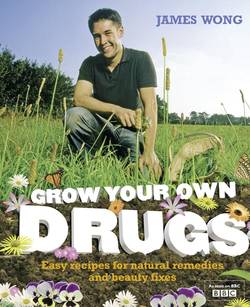Читать книгу Grow Your Own Drugs: A Year With James Wong - James Wong - Страница 10
Type 1 – City-centre gardens and the far south-west
ОглавлениеIt might sound strange to lump the gardens of urban Hackney estates and quaint Cornish cottages together in the same category, but there is method to my madness: city-centre spaces and the far south-west enjoy similar growing conditions – some of the best in the whole country, in fact.
City-centre gardens are often considerably warmer than those of the surrounding countryside, the concrete jungle acting as a giant heat trap to shake off frost. The larger the city, the warmer its centre, which means that all over central London subtropical trees like avocados and citrus are a plausible option for die-hard exotic fans like me. The same concrete ‘hot-water bottle’ phenomenon applies to the domestic garden too: the closer a plant is positioned to a large wall (particularly a sunny south-facing one), the greater the protection it has from the cold. This is a trick that has been used since Victorian times to improve the growth of semi-tropical plants and even boost fruit and flower production on entirely hardy trees. The only key difficulties here are the size of plot needed – growing a 30m eucalyptus tree may not be very practical – and the potentially hazardous effect caused by very high pollution. A fact not often mentioned is that plants can absorb the toxic heavy metals from exhaust fumes, which are then concentrated in their tissues. Because of the potential effects of these, avoid eating plants that have been grown in extremely heavily polluted areas (close to a six-lane motorway, for example). Common sense is always the best rule of thumb; most urban dwellers are fine to get growing and eating.
In the far west and south-west of the country, similar conditions are achieved without the need for urban sprawl, and the extra rainfall and air humidity combine to create almost greenhouse-perfect growing conditions. This means that gardens abandoned for decades – such as the recently restored Trebah Gardens and Lost Gardens of Heligan – thrived for close to a century with almost no intervention from gardeners, though they were buried beneath a thorny forest of brambles. If there were only a Chinatown nearby, I’d be moving straight away!
In these conditions, you can grow the widest range of plants in the country, so you can pretty much take your pick. Gardeners on these sites are at a great advantage for growing tender species that would be impossible to grow anywhere else, and they also have the ideal conditions for growing most species native to the United Kingdom. The small handful of species that are at a slight disadvantage here are species that require frost to produce a good crop, such as blackcurrants and gooseberries. Luckily, these are few and far between.
